OnePlus 10 Pro vs. 9 Pro
The latest OnePlus phone isn't necessarily the best.
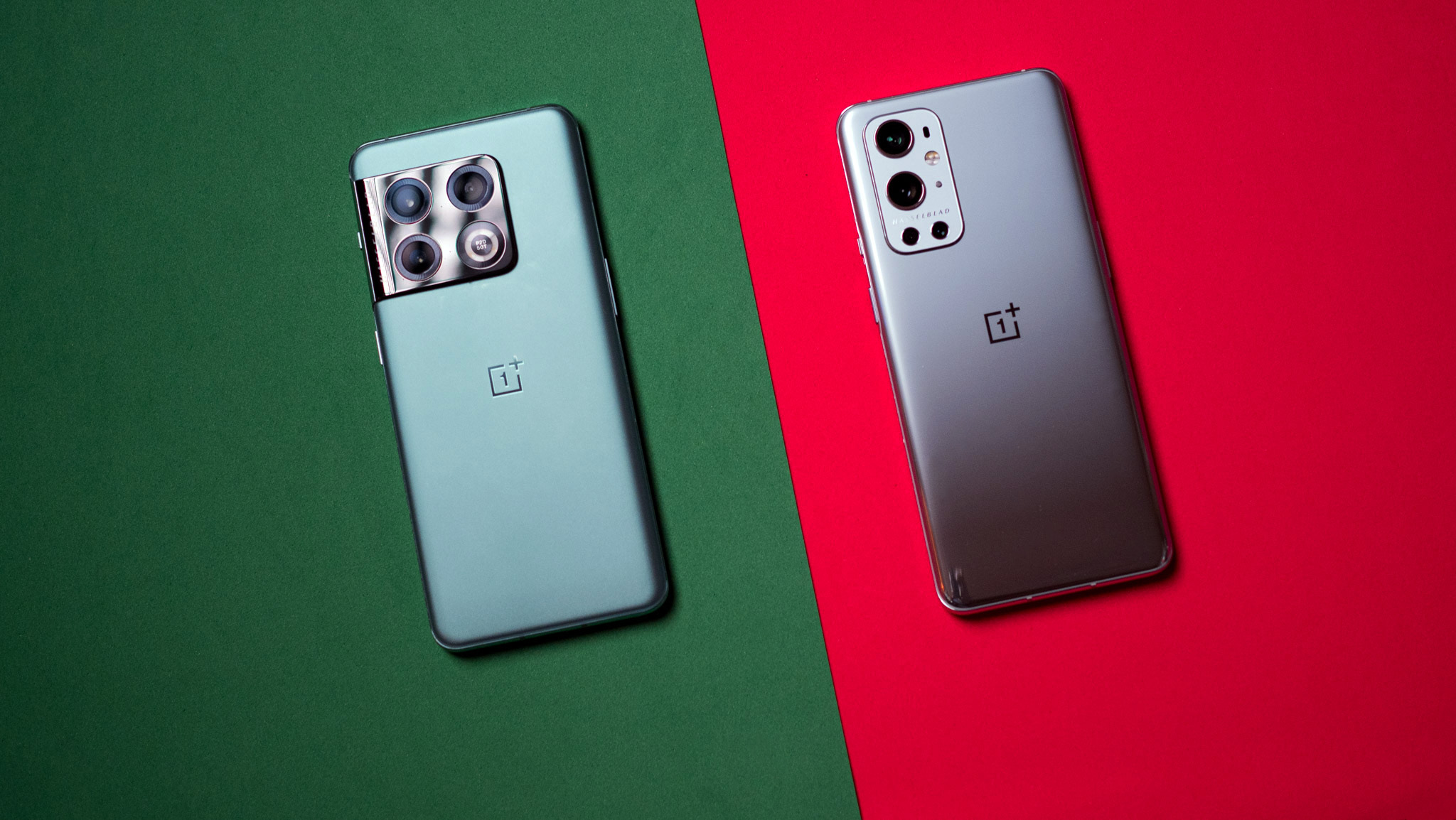

The OnePlus 10 Pro combines a bold new design with the latest internal hardware, ultra-fast charging, and bloat-free software. However, it misses out in a few areas to last year's model, the wide-angle lens isn't quite as good, and the software isn't what it used to be.
Pros
- Sublime 120Hz screen
- Latest internal hardware
- 48MP main camera is exquisite
- 80W wired / 50W wireless charging
- Three platform updates
Cons
- Wide-angle lens not as good as last year
- IP68 water resistance not standard
- North American model gets 65W charger
- Software issues
- Design isn't as elegant

The OnePlus 9 Pro continues to be a solid option in 2022, and it has a lot of positives: The hardware is holding up incredibly well, you get one of the best wide-angle lenses available today, and the main camera isn't bad either. Plus, with the device now on sale, it is a great overall package.
Pros
- Same 120Hz panel as 10 Pro
- Powerful internal hardware
- Standout cameras
- 65W wired / 50W wireless charging
- Three platform updates
- IP68 dust and water resistance
Cons
- Won't get Android 15
- Similar software issues
The OnePlus 9 Pro was proof that OnePlus could deliver a flagship that could hold its own against the best that Samsung, Google, and Xiaomi have to offer, and although OnePlus's camera efforts have languished behind its rivals, the collaboration with Hasselblad gave it a much-needed boost in this area. It hasn't changed the formula too much this year with the OnePlus 10 Pro; the fundamentals are nearly identical across both devices, but there are a few meaningful ways where they differ.
OnePlus 10 Pro vs. OnePlus 9 Pro: Design and screen
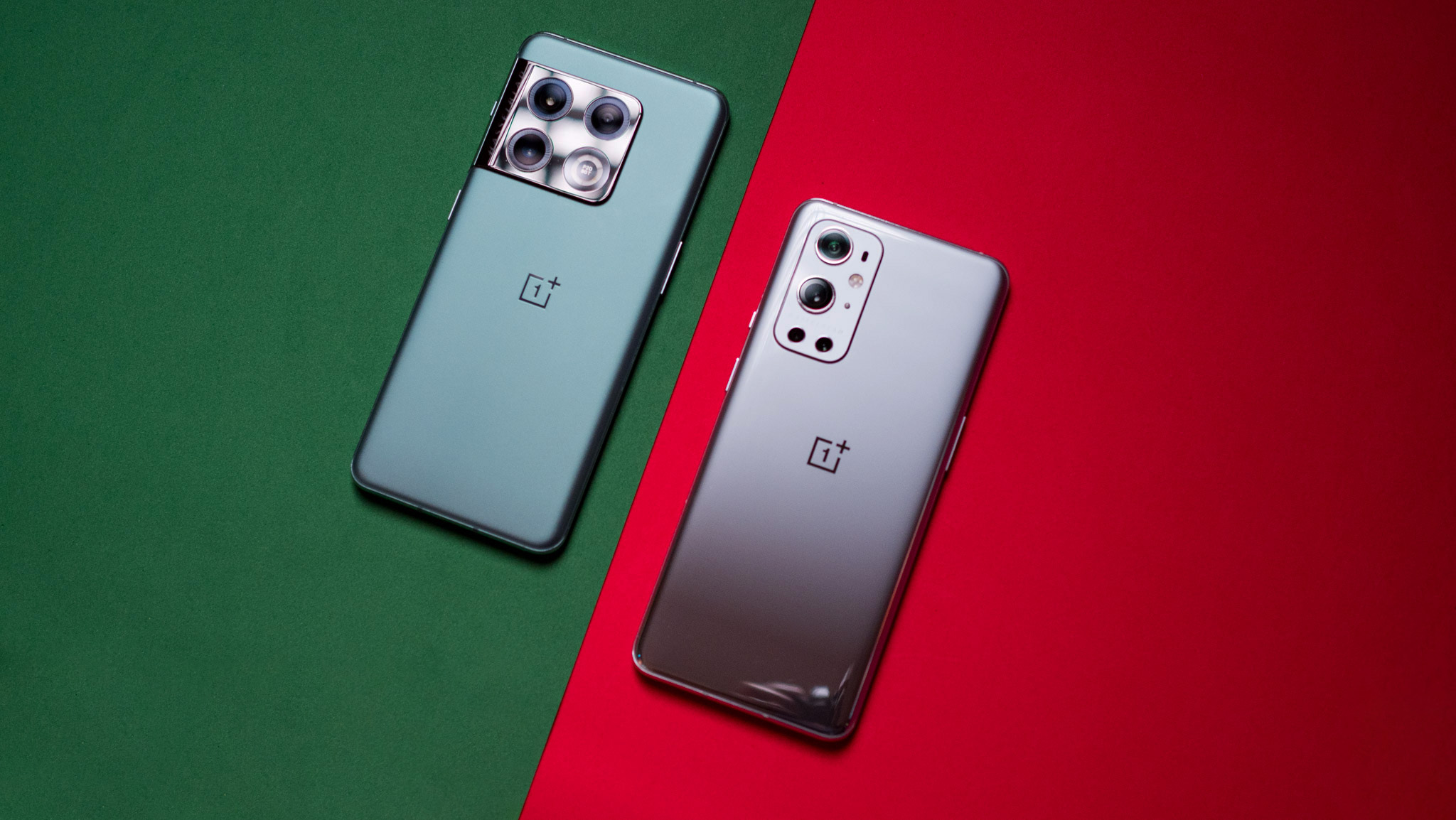
OnePlus likes to maintain a similar aesthetic across generations, and that's sort-of still the case with the OnePlus 10 Pro. The device has the same rounded edges and subtle curves at the front and back where the panes of glass meet the mid-frame, but the big change this year has to do with the new camera housing.
The OnePlus 9 Pro has an elegant rectangular camera island that houses the 48MP main lens and 50MP wide-angle lenses in large rings accented by chrome, with the 8MP zoom lens getting a similar arrangement, albeit in a smaller housing.
The OnePlus 10 Pro's camera housing isn't anywhere as elegant as the 9 Pro, but you get a matte finish at the back that's great for daily use.
That minimalist design carriers throughout the OnePlus 9 Pro's aesthetic, and the Morning Mist color option in particular continues to look stunning — this is my favorite OnePlus phone design of the last two years. For its part, the 10 Pro has retained a bulk of the same design; both phones have nearly the same dimensions, with the 10 Pro just 4g heavier because of the larger 5000mAh battery.
The main issue I have with the 10 Pro is that giant camera housing at the back. The large square island is very prominent and blends seamlessly with the mid-frame, and when seen next to the 9 Pro, it looks ostentatious. There are three camera modules with the 10 Pro, and all three are arrayed in identical rings, with the LED flash ensconced in the fourth ring.
I'm using the Emerald Forest variant of the 10 Pro, and in this hue, the camera housing contrasts nicely with the green color hue. And while I don't necessarily like the layout of the cameras as much as last year, the 10 Pro gets a matte texture at the back that feels great to hold and use.




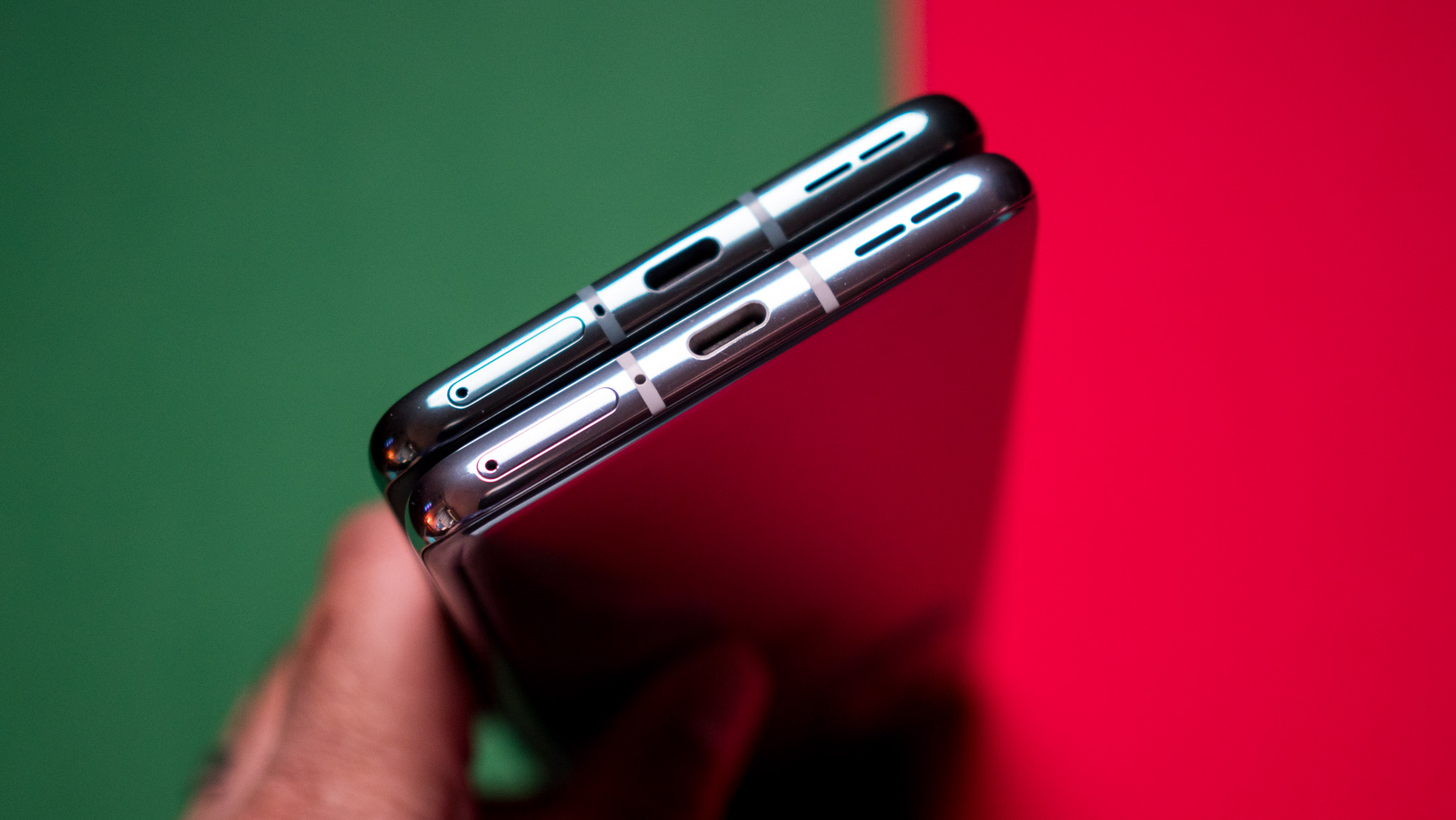
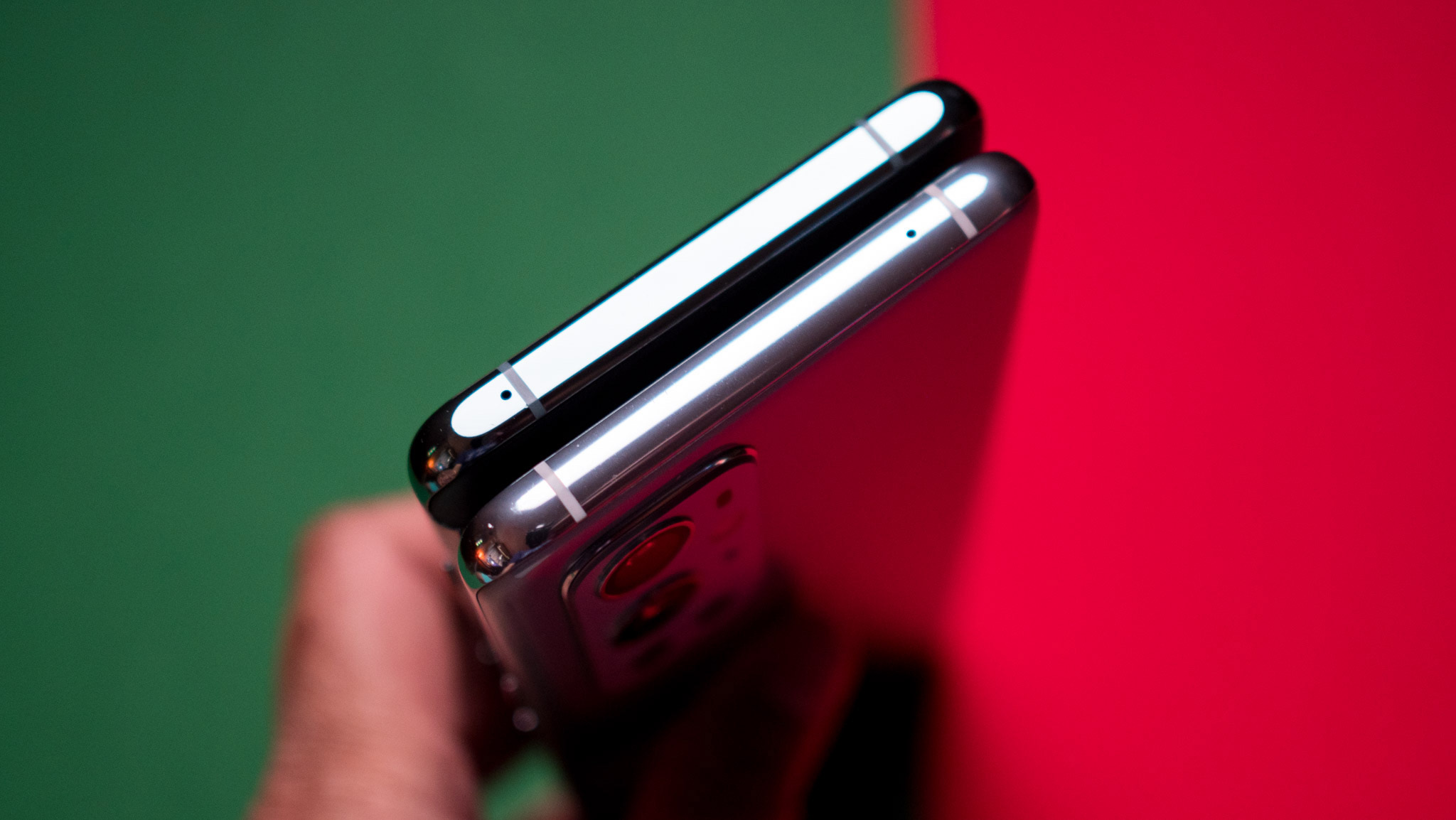
The OnePlus 9 Pro has a glossy finish and is prone to smudges, and that thankfully isn't the case on the 10 Pro. Of course, this is only relevant if you intend to use the phone without a case; if you're going to put a case on it, this doesn't really matter.
Get the latest news from Android Central, your trusted companion in the world of Android
As for in-hand feel and usability, both devices are identical; as I said at the start, the overall design language with flowing curves hasn't changed, and both devices are comfortable to hold and not unwieldy. The ports and buttons are also in the same location, and the alert slider continues to be a standout feature.
Both devices come with dual SIM as standard, but if you're buying these phones in North America, you'll be limited to a single SIM card slot — as always, it's because of the carriers.

Another area that hasn't changed too much is the screen. Both devices feature a 6.7-inch QHD+ AMOLED screen with 120Hz refresh, and in my usage, I didn't see any differences between the two. You get excellent color vibrancy and great brightness levels on either device, and you'll find the same set of customizable features.
Because you get the ability to scale to 120Hz on both phones, they feature LTPO tech that dynamically adjusts refresh based on the content on the screen. The OnePlus 10 Pro is able to do this on-the-fly switching a little faster, but honestly, you don't notice the difference in day-to-day use.
Both devices have the same stereo configuration, and the onboard sound is more than adequate for casual gaming and streaming the occasional YouTube video. Always-on mode is identical; you can set custom backgrounds and select a schedule for the mode to kick in.
Both phones are resilient to tumbles, with the 10 Pro having a slight edge in this area thanks to Gorilla Glass Victus at the front — you'll find Gorilla Glass 5 at the back on either device.
OnePlus 10 Pro vs. OnePlus 9 Pro: Hardware

Coming to the internal hardware, there's little to no difference here. The OnePlus 10 Pro is running the latest Snapdragon 8 Gen 1, and the 9 Pro is powered by last year's Snapdragon 888 and it is just as powerful in day-to-day use. You'll only notice a difference in synthetic scores, and even in those scenarios, the 9 Pro manages to not only hold its own, but also edge out the 10 Pro.
The 10 Pro doesn't get IP68 rating — a feature that's a mainstay on the 9 Pro. But the device itself is water resistant.
What you will see on both devices is outstanding performance. OnePlus knows how to optimize a phone to take full advantage of the hardware, and that's evident with the 10 Pro and 9 Pro. Although I used several phones featuring the same hardware, they don't feel quite as nimble as the OnePlus flagships. Of course, I'm saying this after using the 10 Pro for over two months; when I got started with the phone, it wasn't optimized. But after a software update fixed the issue, the 10 Pro really came into its own.
Memory and storage is identical; both phones feature 8GB/128GB, and you can pick up the 8GB/256GB option if you want more storage. You also get 5G as standard, but the unlocked version of the 10 Pro is limited to Sub-6 connectivity — you'll need to buy the carrier variant if you want mmWave 5G.
As for the Indian model, the 9 Pro has just two 5G bands (41/78), with the 10 Pro fixing that particular oversight (1/3/5/8/28/40/41/78/79). Both devices get Wi-Fi 6 and Bluetooth 5.2 as well as NFC, and like all OnePlus phones in the last five years, there's AptX HD.

One area where the OnePlus 10 Pro is found to be lacking is water resistance. It is missing IP68 dust and water resistance, a feature that's available as standard on the 9 Pro. If you need the IP rating, you'll need to pick up the T-Mobile version of the 10 Pro. That said, the phone itself is water resistant — I tested this part thoroughly over the last two months — but OnePlus didn't bother to pay the licensing fee for IP68. This isn't an issue on the 9 Pro.
Battery life is where the 10 Pro has a slender edge due to the larger 5000mAh battery. The 9 Pro comes with a 4500mAh battery that manages to last all day without any issues, but in my use, I found the 10 Pro to last over a day consistently. You'll also find 80W wired charging with the 10 Pro, and 65W with the 9 Pro.
Now, there isn't too big a differential between the two standards, with the 10 Pro taking on average five minutes less to fully charge its battery. Yes, the battery itself is larger, but you shouldn't pick up the 10 Pro for its 80W charging tech. The North American model comes with a 65W charger by default, as the 80W standard doesn't deliver its full potential over 110v. There's 50W wireless charging as well across both devices, and that takes around 50 minutes to fully charge the battery.
OnePlus 10 Pro vs. OnePlus 9 Pro: Cameras
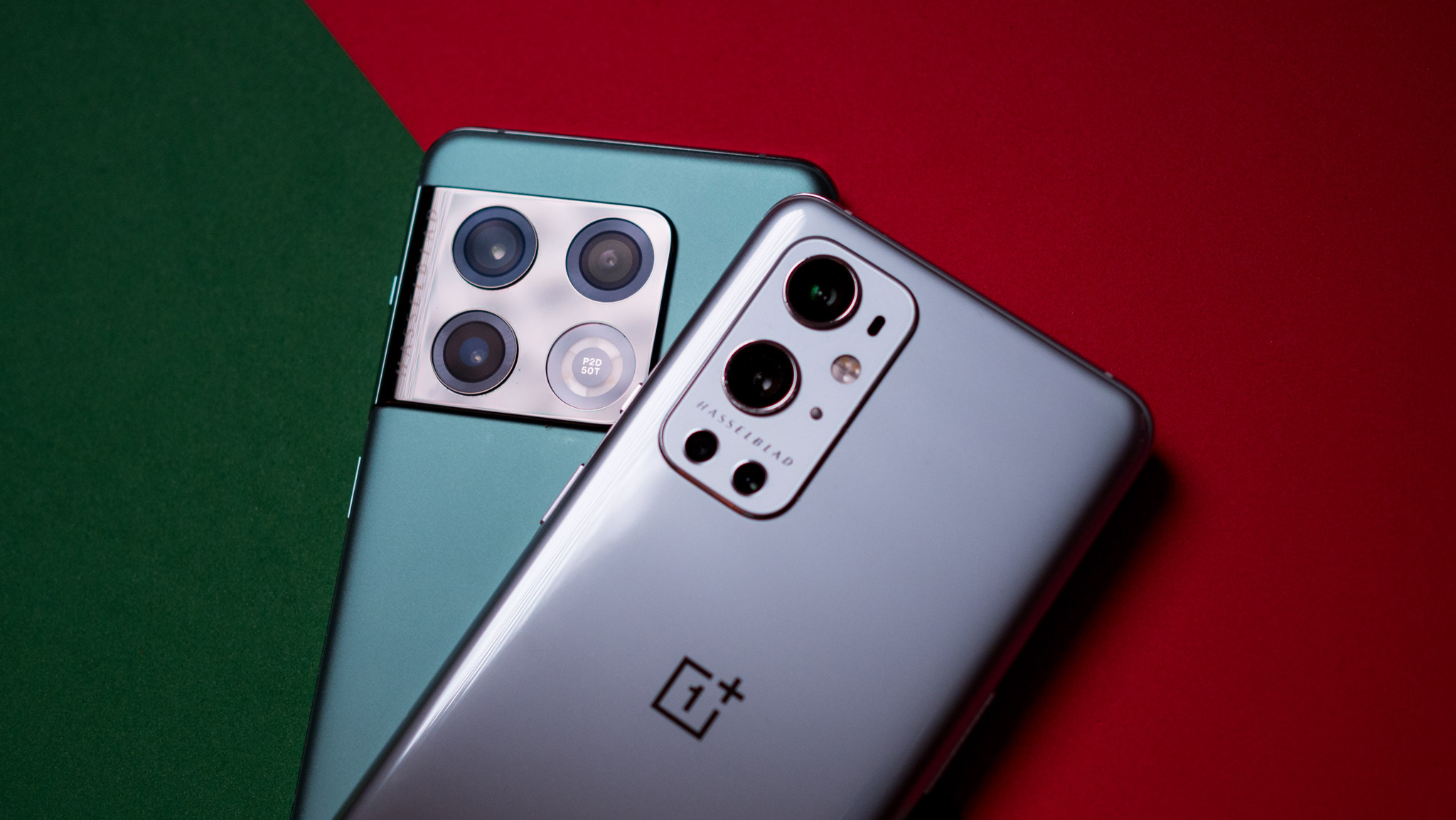
OnePlus hasn't changed the 48MP IMX789 camera that debuted last year on the 9 Pro, with the 10 Pro retaining the same module. The 50MP wide-angle lens has been switched out from the IMX766 in the 9 Pro to a Samsung JN1 in the 10 Pro. You'll also find the same 8MP zoom lens with 3.3x optical zoom.
The interface is identical as well; you get the same shooting modes, leaf shutter sound, and other Hasselblad accouterments.
Both phones manage to deliver great photos via the main 48MP camera, and that's not astonishing considering they're using the same hardware and camera tuning algorithms. It's easy to see that both devices benefit from Hasselblad's color science and feature unique filters, although I found the 10 Pro to be better at accurate colors — the 9 Pro tends to produce shots that are overly saturated.
But it's the wide-angle lens where the 9 Pro pulls out into the lead. Although both phones feature a 50MP wide-angle lens, the 10 Pro's JN1 sensor isn't anywhere as good as Sony's IMX766. Part of the problem is that the 10 Pro's sensor size is smaller, and that shows up in photos. The phone doesn't deliver anywhere close to the same caliber of shots as the 9 Pro, so if you see yourself using the wide-angle lens a lot, the 9 Pro is the obvious choice.
The main camera on both devices holds its own against the best Android phones, but the 10 Pro misses out on the versatility on offer with the 9 Pro.
OnePlus 10 Pro vs. OnePlus 9 Pro: Software
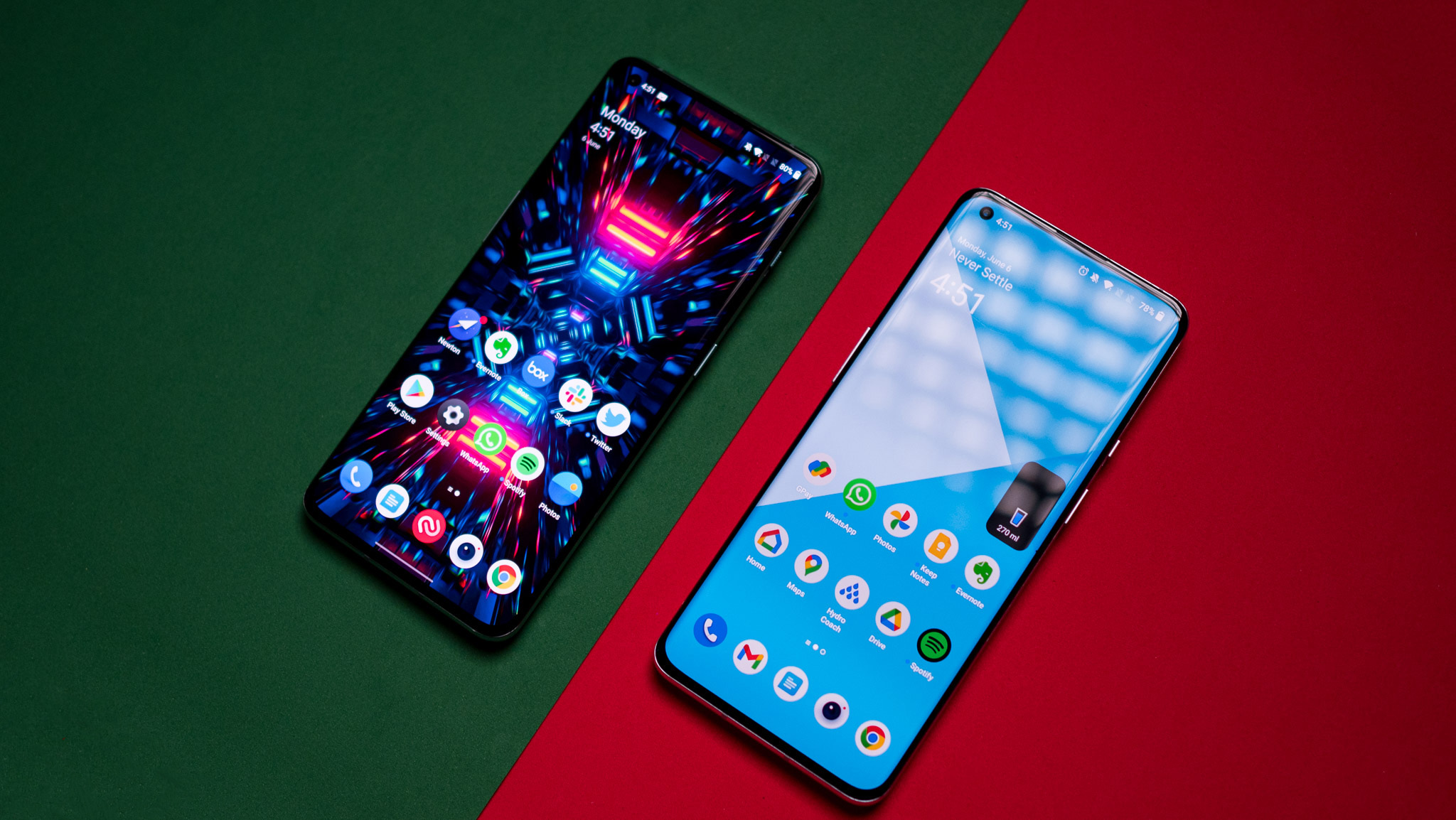
The OnePlus 10 Pro launched with Android 12 out of the box, with the global models running OxygenOS 12.1. I covered OnePlus's software situation extensively, so I'm not going to focus too much on that here. But as a high-level overview, what you need to know is that OxygenOS 12.1 is identical to ColorOS 12 with a few extras.
Both phones will get three Android updates, but OxygenOS's future is still unclear.
The interface is very different to what OxygenOS used to look like in the past, so if you're eyeing either device for a clean UI that's close to pure Android, you'll need to look elsewhere. Having said that, you don't find any bloatware here, and OnePlus has managed to do a good job optimizing the software.
There's no bloatware, but you'll still find bugs on either device. Notification bugs continue to be a major annoyance on the 10 Pro, and with the 9 Pro also switching to the same OxygenOS 12.1 build, it has the same issues.
As for software updates, both phones will get three guaranteed Android updates with four years of security updates. This is in line with other Chinese manufacturers, with Samsung still the outright leader when it comes to updates. The bigger issue here is that neither device is likely to get platform updates on time. OnePlus used to be one of the first to roll out platform updates, but after the ColorOS integration, it has significantly lagged behind its rivals in this area.
OnePlus 10 Pro vs. OnePlus 9 Pro: It's an easy choice
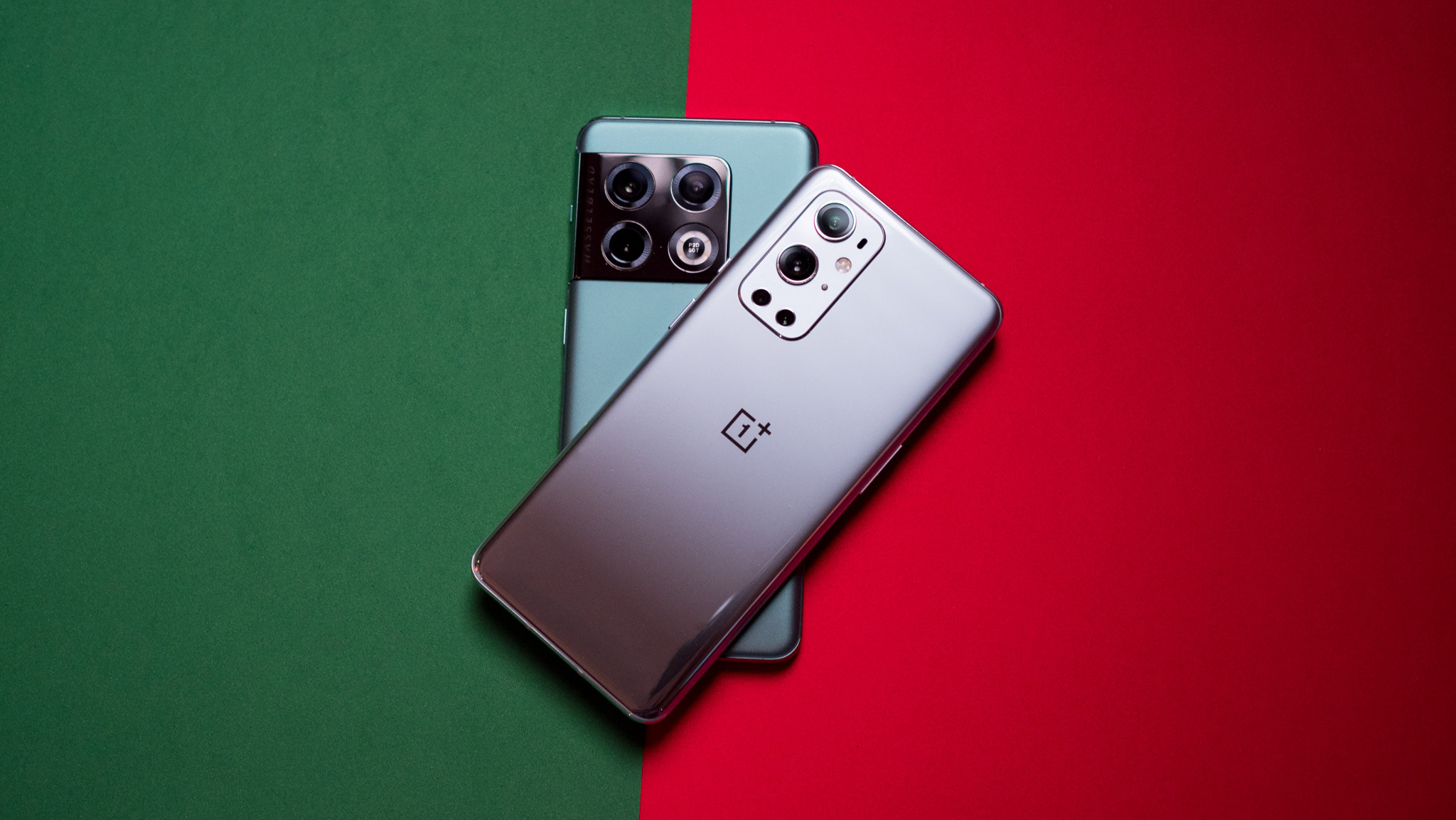
As I mentioned several times throughout this post, the OnePlus 10 Pro isn't radically different to its predecessor. You get the same AMOLED screen, similar internal hardware, identical software, and they both feel the same in-hand. The 48MP camera is also unchanged, so you get the same caliber of photos in challenging conditions.
If you want a OnePlus flagship in 2022, you should buy the OnePlus 9 Pro.
Now, because of all these similarities, the OnePlus 9 Pro continues to be a stellar option in 2022. What makes it even better is the 50MP wide-angle lens at the back; OnePlus hobbled this sensor on the 10 Pro, and while it is also a 50MP module, the quality isn't anywhere as good as last year. You also get IP68 as standard on the 9 Pro, and I think the design looks better.
Yes, the 9 Pro will get one less platform update as it launched with Android 11 out of the box. And that's fine; if that is a deal-breaker, you should pick up the 10 Pro. But the upside to the 9 Pro is that because it has been on sale for a year, you'll get it at a discount.
The 12GB/256GB model is now available for $800, $100 less than the 8GB/128GB version of the 10 Pro. It's an even more enticing deal in India, where you can get your hands on the 8GB/128GB OnePlus 9 Pro for just ₹49,999 ($643), with the same version of the 10 Pro costing ₹66,999 ($862).
At the end of the day, the value on offer clinches the victory for the 9 Pro. If you're interested in buying a OnePlus flagship in 2022, you should pick up the OnePlus 9 Pro.

The OnePlus 10 Pro has the makings of a good flagship; you get the latest hardware, bold design, stunning 120Hz screen, and all-day battery with up to 80W charging. But it misses out on a great wide-angle camera, there are software frustrations, and for what you ultimately pay, you'll find other phones that deliver a better all-round value.

The OnePlus 9 Pro is a stellar choice in 2022. The design has aged well, the hardware is just as powerful, and you're getting one of the best camera packages in this category. The fact that it's selling at a sizeable discount makes it all the more enticing.

Harish Jonnalagadda is Android Central's Senior Editor overseeing mobile coverage. In his current role, he leads the site's coverage of Chinese phone brands, networking products, and AV gear. He has been testing phones for over a decade, and has extensive experience in mobile hardware and the global semiconductor industry. Contact him on Twitter at @chunkynerd.
